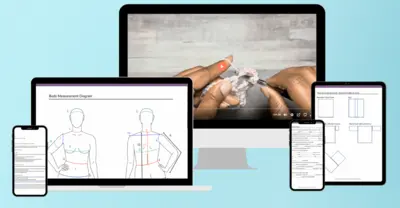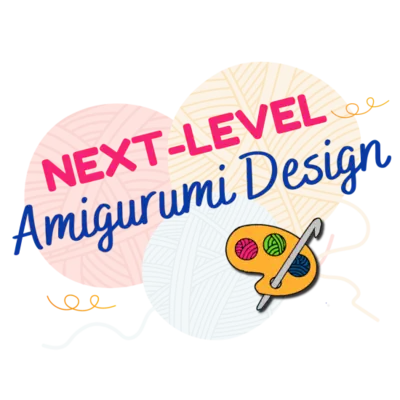
Before you go, check this out!
We have lots more on the site to show you. You've only seen one page. Check out this post which is one of the most popular of all time.
If you’re a crochet enthusiast dreaming of turning your passion into a profession, the Crochet Pattern Writing Workshop by Edie Eckman is a must-have resource. This self-paced online course dives deep into the art of crafting clear, professional crochet patterns, offering practical tips and expert guidance from a seasoned designer. Whether you want to sell your designs or share them with the world, this workshop equips you with the tools to succeed.
If you want to learn more about design, I recommend “From Stitch to Style” mini-course, offered by Creations by Courtney, is a focused program designed to teach crocheters how to design their own garments. This self-paced course provides instant access to valuable lessons, including how to take proper measurements, calculate stitch counts, and draft patterns for various garment types like cardigans and tops. Aimed at turning your crochet skills into stylish, wearable creations, it’s perfect for those looking to elevate their craft and potentially grow an online presence.

If amigurumi is more of your style, you’ll need to check out Next Level Amigurmi Design Course. This comprehensive course, led by professional designer Hooked by Kati, offers innovative, easy-to-follow patterns and expert guidance to help you bring your plushie visions to life. Whether you’re aiming to stand out in the amigurumi community or build a thriving design business, this class is a game-changer.

To kick off your pattern-writing journey, familiarize yourself with the necessary software. Google Docs is your go-to, offering a browser-based word processor that allows easy collaboration. Unlike traditional word processors, Google Docs lets you share your patterns seamlessly with testers and editors. You’ll be using the entire Google Suite, including Drive, Docs, Sheets, and Photos – all free and browser-based.
Google Docs becomes your pattern home base. Collaborative features make it easy to share documents with testers and editors, allowing real-time updates. Set testers as commenters for their valuable feedback. Make a copy for editors, granting them editing permissions. This collaboration ensures your pattern is polished and error-free.
After writing your pattern, find reliable pattern testers. Utilize your Facebook business page to seek volunteers. Don’t skip the crucial step of sending your pattern to a Tech Editor. They spot mistakes you might overlook, ensuring your pattern is top-notch.
You can typically find free pattern testers by posting in online communities. Engage with crochet communities on platforms like Ravelry, Facebook groups, or Instagram. Post calls for testers with clear instructions and requirements. Provide testers with detailed instructions, including skill level requirements, deadlines, and feedback expectations. Clear communication ensures productive testing. Show gratitude to your testers for their time and feedback. Consider offering perks such as free patterns or discounts as a token of appreciation.
Finding a tech editor for your crochet patterns is crucial for ensuring accuracy, clarity, and professionalism in your designs. Here’s a step-by-step guide for crochet designers to find a tech editor:
1. Research
Online Platforms: Explore platforms like Ravelry, which have communities of tech editors and designers. You can post in forums or groups specifically dedicated to tech editing services.
Social Media: Utilize social media platforms like Instagram, Facebook, or Twitter. Search for hashtags like #techeditor, #crochettecheditor, or #crochetpatterneditor to find professionals in the field.
Freelance Websites: Websites like Upwork, Freelancer, or Fiverr often have freelance tech editors available for hire. Review profiles, portfolios, and ratings to find suitable candidates. Industry
Networks: Attend crochet conferences, workshops, or join professional organizations related to crochet design. Networking with fellow designers may lead to recommendations for reliable tech editors.
2. Evaluate Candidates:
3. Reach Out:
4. Collaboration:
In the US, most tech editors for crochet patterns charge $20–$30 per hour, billed in 15-minute increments. Some tech editors charge a base rate, plus additional time for each 15-minute increment. For example, a tech editor’s base rate can be $36 per hour, with a 30-minute minimum of $18, and additional time charged at $9 per 15 minutes. Another tech editor may charge $45 per hour for technical editing, including schematic and chart preparation.
The rates for tech editors can vary depending on several factors, including their experience, expertise, the complexity of the project, and regional differences in the cost of living.
As you prepare your pattern for public consumption, adhere to industry-specific writing standards. Consider pricing carefully, factoring in fees from platforms like PayPal, Etsy, and Ravelry. Here are some sites to self-publish your patterns:
1. Ravelry
2. Love Crochet
3. All Free Crochet
4. Crochet Pattern Central
5. Crochet Talk
6. Crochet at Play
7. Crochetville
8. The Yarn Box
9. Fave Crafts
10. Crochet Patterns Galore